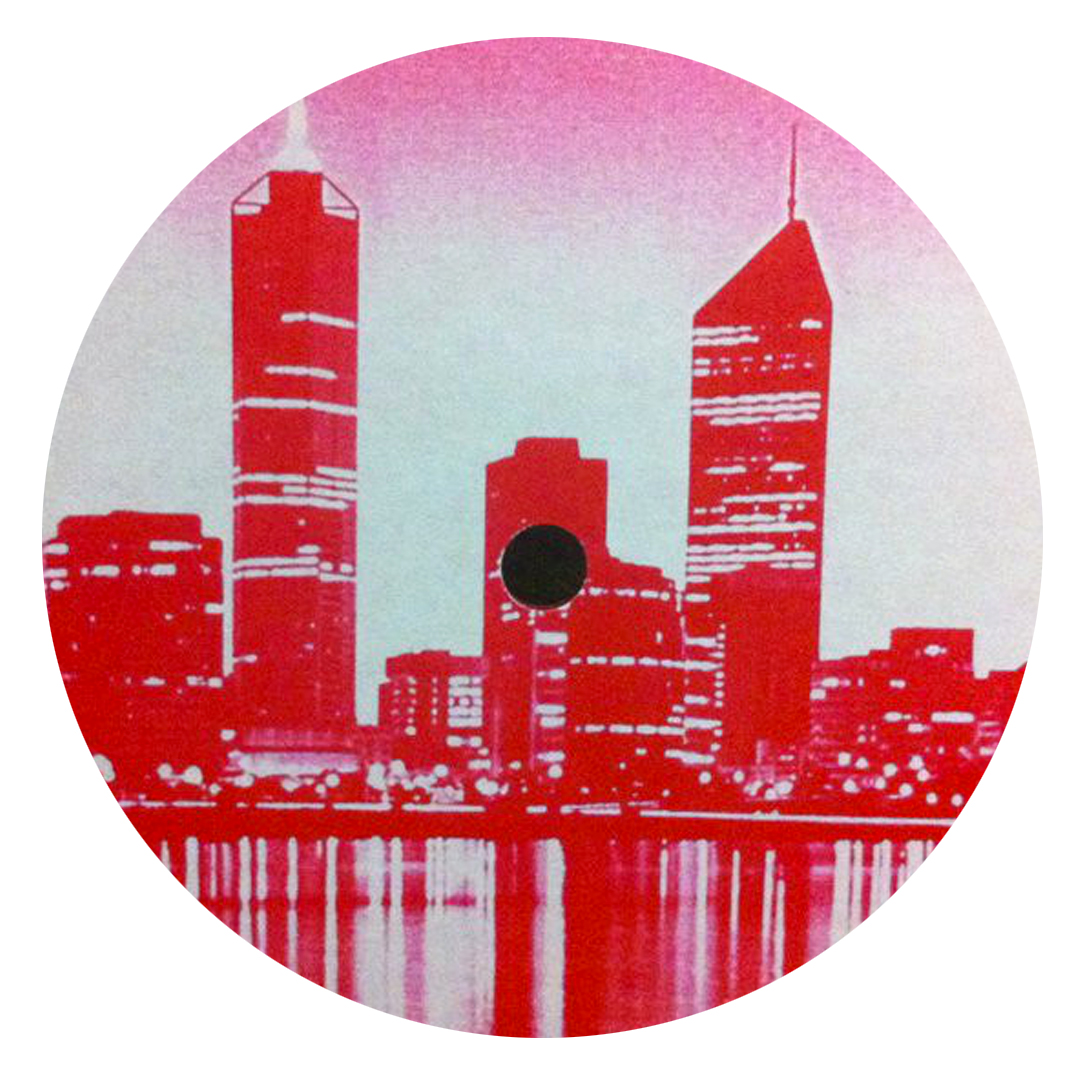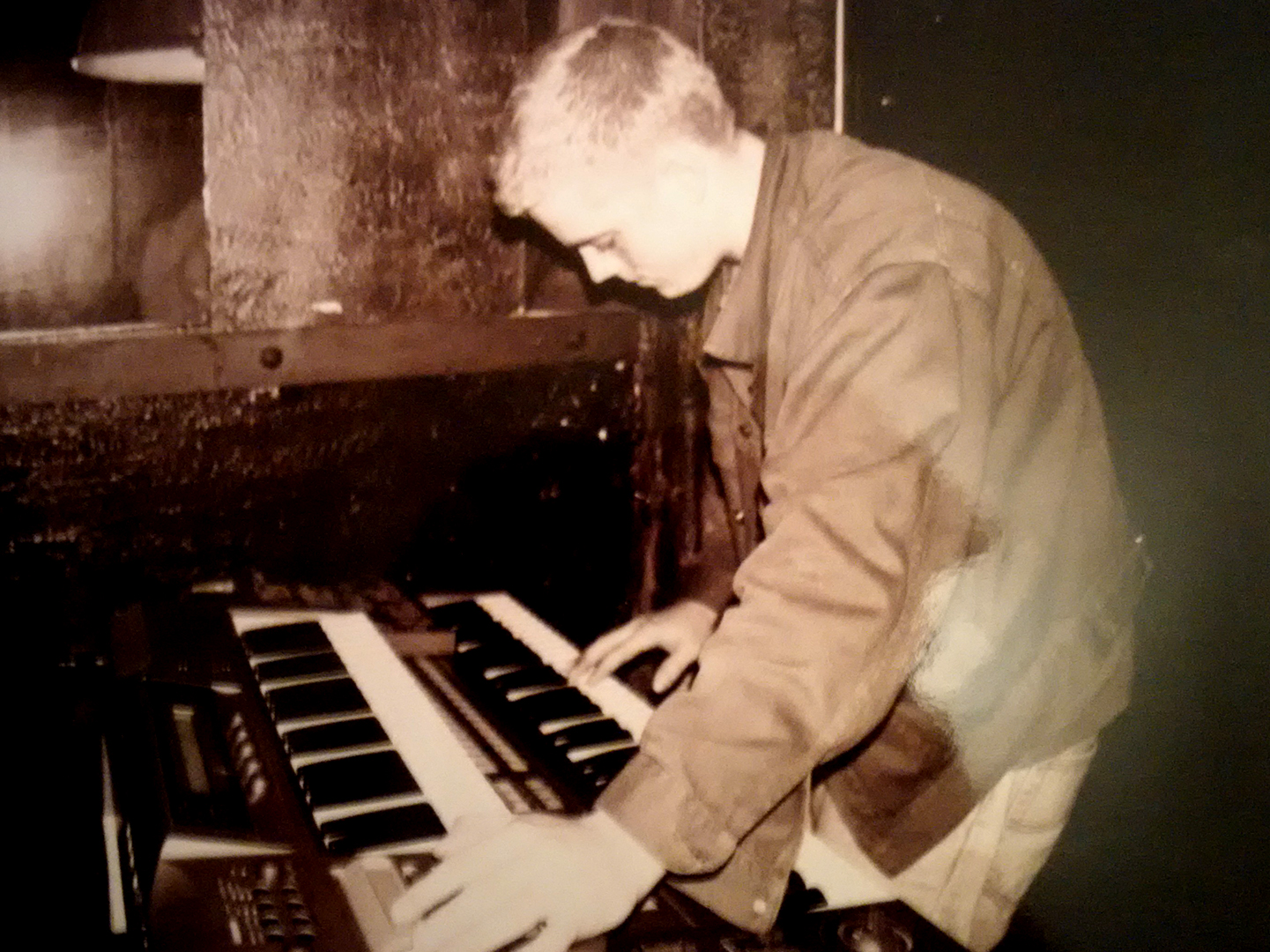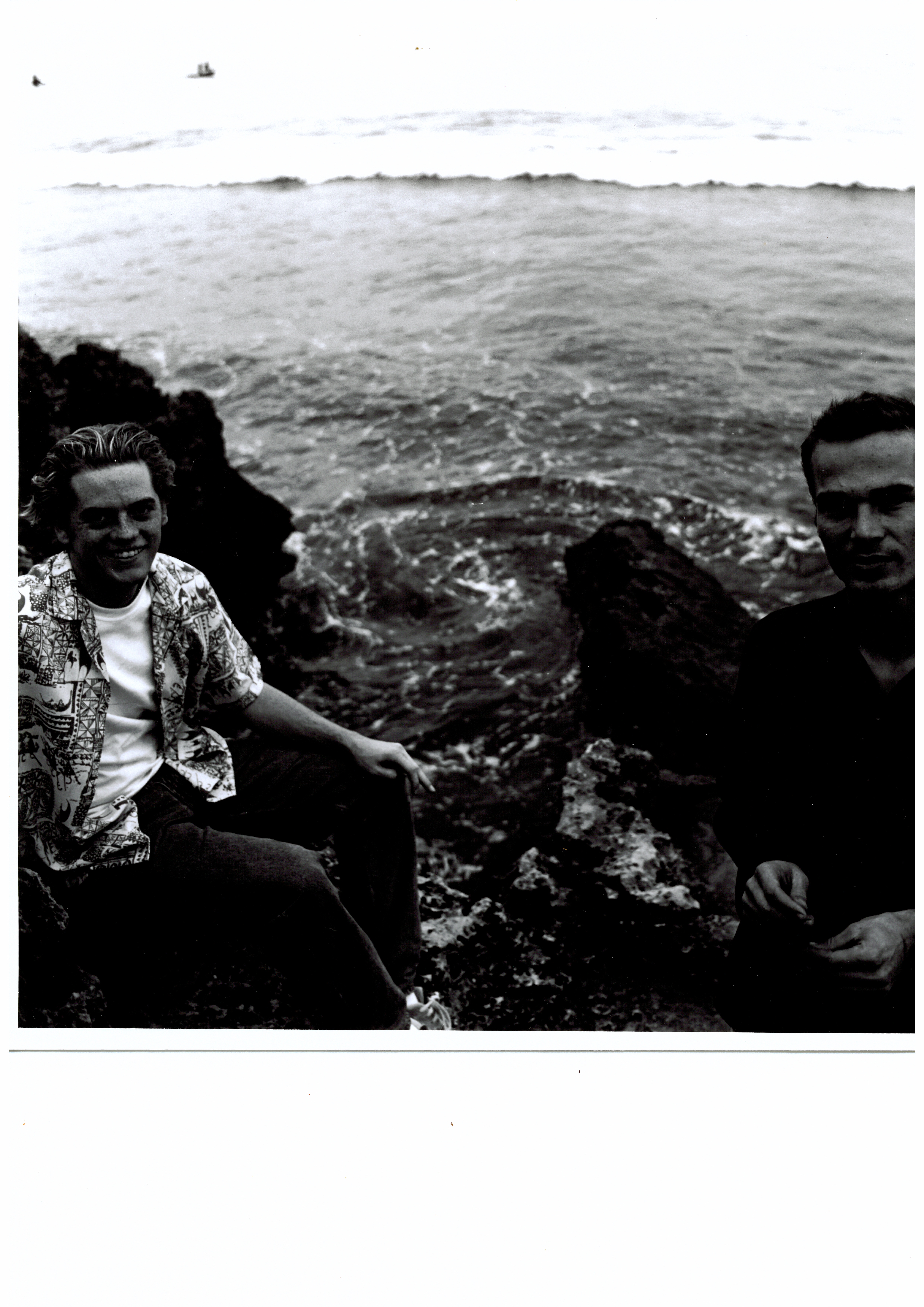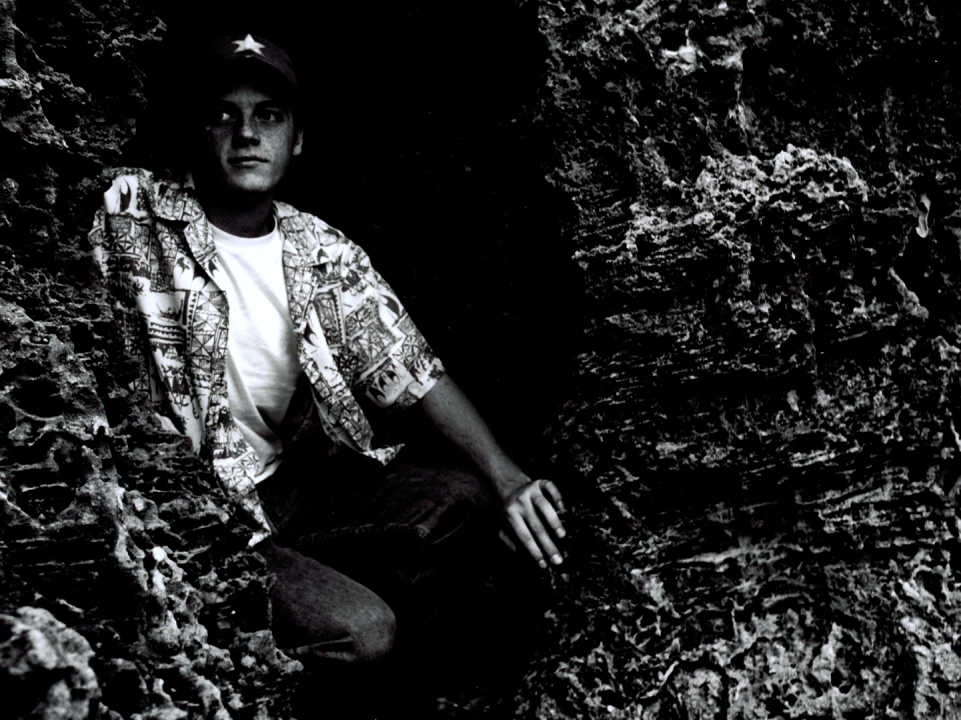Red Ember Records is the house record label founded by Perth producer Ewan Jansen in 1997, running just short of five years with its final release in 2001. The label’s handful of releases during this period provides a snapshot into Perth’s vibrant house scene in the late 1990s.
It wasn’t until over a decade later however, while Ewan was at the pub with a friend when the producer learned of the demand online for the small run of original pressings and their hefty price tags. This revelation and his revision of producing music led to the return of Red Ember Records pressing in 2016. We revisited Red Ember's history ahead of the Butter Sessions release of Ewan’s LP Island Diary.
[On a side note, I’d also like to thank Ewan for agreeing to this second interview as I realised due to a technical fault I didn’t have a recording of the first… There are few other individuals which would so kindly accept this major fuck up.]

You’ve been in the game for quite a while now; over 20 years and you’re consistently producing and releasing relevant dance music. Where did your love of dance music initially come from?
I started making music on an Amiga 500. That was the computer that my parents got me for doing school assignments on when I was little. I got a free sequencing program on the front cover of a magazine one day and plugged that in and I got hooked away from games into making tracker music. I did as much research as I could about the Amiga and making music - without the internet too. I would read these import magazines from the UK, trying to patch together all this information. Through that process I learnt that rave music was what was happening outside and that was similar to what I was getting into myself. That was a big inspiration, that kind of UK bedroom producer rave scene even though I wasn't really old enough to be physically involved in it locally.
Perth is one of the most isolated cities in the world. You began your record label Red Ember Records over 20 years ago in 1997. What was the Perth music scene like during this time?
There was a really strong drum and bass scene in Perth, kind of on the world map. There was also a deep house scene and I'm talking from the perspective of a 20-year-old here but I think that came from some of the older Perth cats that had come from that rave arena. There were dedicated clubs, loads of nights, DJs were getting flown into Perth almost directly. All the sort of big names plus the new second wave of Detroit and Chicago legends. There was also one particular record store owner Ben Stinga, who was importing all the really good stuff that was a real education on the history and leading edge of house music. There were some solid local DJs but only a few producers I knew of, yet the scene felt super strong. I felt like if you were just coming out of high school and just wanted to party, it was likely that you might slip into one of those two quite underground scenes and I think that was really lucky.

What determined that leap from a party-goer and music producer to starting your own label?
When you’re a music maker and of that age where you’re still trying to discover things, you’re just constantly looking up to people and we were looking to largely American house producers which is of course all on vinyl. That was the apex you know, if you could get on a record that was just the most amazing thing in the world. So I sent out a lot of demos and I’d met Justin Zerbst and we both just wanted our music on record and we just investigated how to do that. There was one quite expensive option for us in Melbourne so initially, we found this guy called Peter King in New Zealand who pressed smaller quantities so we could get 20, 30 or 40 at the one time.

So your records were pressed in runs of under 50 and on a special lathe-cut vinyl which is a method that is quite different to traditionally pressed records so these editions are highly sought after. How were the records received initially and when did you then notice the surge in interest?
These records were made by a guy that was kind of similar to us where we really loved what we were doing we're trying to get the best result yet working within certain constraints. This polyplastic material wasn't as good as vinyl - mind you he roofed his house with it, so it excelled at that. Anyway, it took a bit of a leap of faith for the local people to go "okay, cool I appreciate you making this item and you're getting out the music." Some people were a bit frustrated they couldn't really DJ with them. But you know, we just laid out a bit of a story. As soon as I could I made the move to proper vinyl. I guess then a few of these records made their way off the island. At the time, we just sold them at the local record store and then sent a couple to Melbourne and Sydney and then that was it, we just forgot about it. Then 15 years later someone tells you these things are going for high prices on Discogs and you’re like “what the fuck is Discogs?”.
Red Ember took quite a hiatus from 2001 right up until 2016. What instigated the come back?
There were a couple of things. Mike Grant who runs Moods and Grooves records in the US, who I'd done my first and still only album with randomly called me up one day. I'll never forget it as I was just hanging up the washing and I picked up the phone and he said "hey, it's Mike. I just got out of the army. I'm restarting the label, I just want to ask if it's cool to put a track on this classic series that I'm doing." And I thought what? Classics? I then sort of realised, I'm getting old. It made me think that there was this whole era that was being dug up. So I got some contacts for this collective of artists, designers, musicians and DJs called HardWorkSoftDrink and I managed to get myself on their fifth release. It turned out that they were a pretty cult label so that gave me a bit of a kick. That release was still stuff they found through my archives. Through that I then started piecing together my studio, pulling out old synths and fell back in love with them and started making music again.

Photos by Patrick Schüttler
Where is the label these days?
We just released this double record by Rawell on the Embers Only inprint, which is like an archive diving sublabel and that really sealed off this year. I feel like Red Embers has had two phases; that early stage and now. I feel like I’ve got a lot of loose ends out of my system with phase two. I feel like it might be time to take a jump forward for a third [phase but with a bit of a break in between.
Looking to the immediate future, you’ve got this upcoming release with Butter Sessions, Island Diary. How was it working as an artist with a label as opposed to acting as the distributor?
I really enjoy working with Maryos and Corey, I trust them and their ears. It’s always a relaxing but organised process, and this time resulting in Island Diary, the EP or it’s almost like a mini-album. It was some different stuff that I largely wrote this year in lockdown. It’s something to move forward with personally as I want to start venturing out of the 4/4 zone a little. They were super supportive of that and I am equally stoked to be back on Butter Sessions for a second time as I’ve grown to know it’s one of the best labels in Australia and also widely respected overseas.
Island Diary by Ewan Jansen drops this Friday 11 December.
Red Ember Records is the house record label founded by Perth producer Ewan Jansen in 1997, running just short of five years with its final release in 2001. The label’s handful of releases during this period provides a snapshot into Perth’s vibrant house scene in the late 1990s.
It wasn’t until over a decade later however, while Ewan was at the pub with a friend when the producer learned of the demand online for the small run of original pressings and their hefty price tags. This revelation and his revision of producing music led to the return of Red Ember Records pressing in 2016. We revisited Red Ember's history ahead of the Butter Sessions release of Ewan’s LP Island Diary.
[On a side note, I’d also like to thank Ewan for agreeing to this second interview as I realised due to a technical fault I didn’t have a recording of the first… There are few other individuals which would so kindly accept this major fuck up.]

You’ve been in the game for quite a while now; over 20 years and you’re consistently producing and releasing relevant dance music. Where did your love of dance music initially come from?
I started making music on an Amiga 500. That was the computer that my parents got me for doing school assignments on when I was little. I got a free sequencing program on the front cover of a magazine one day and plugged that in and I got hooked away from games into making tracker music. I did as much research as I could about the Amiga and making music - without the internet too. I would read these import magazines from the UK, trying to patch together all this information. Through that process I learnt that rave music was what was happening outside and that was similar to what I was getting into myself. That was a big inspiration, that kind of UK bedroom producer rave scene even though I wasn't really old enough to be physically involved in it locally.
Perth is one of the most isolated cities in the world. You began your record label Red Ember Records over 20 years ago in 1997. What was the Perth music scene like during this time?
There was a really strong drum and bass scene in Perth, kind of on the world map. There was also a deep house scene and I'm talking from the perspective of a 20-year-old here but I think that came from some of the older Perth cats that had come from that rave arena. There were dedicated clubs, loads of nights, DJs were getting flown into Perth almost directly. All the sort of big names plus the new second wave of Detroit and Chicago legends. There was also one particular record store owner Ben Stinga, who was importing all the really good stuff that was a real education on the history and leading edge of house music. There were some solid local DJs but only a few producers I knew of, yet the scene felt super strong. I felt like if you were just coming out of high school and just wanted to party, it was likely that you might slip into one of those two quite underground scenes and I think that was really lucky.

What determined that leap from a party-goer and music producer to starting your own label?
When you’re a music maker and of that age where you’re still trying to discover things, you’re just constantly looking up to people and we were looking to largely American house producers which is of course all on vinyl. That was the apex you know, if you could get on a record that was just the most amazing thing in the world. So I sent out a lot of demos and I’d met Justin Zerbst and we both just wanted our music on record and we just investigated how to do that. There was one quite expensive option for us in Melbourne so initially, we found this guy called Peter King in New Zealand who pressed smaller quantities so we could get 20, 30 or 40 at the one time.

So your records were pressed in runs of under 50 and on a special lathe-cut vinyl which is a method that is quite different to traditionally pressed records so these editions are highly sought after. How were the records received initially and when did you then notice the surge in interest?
These records were made by a guy that was kind of similar to us where we really loved what we were doing we're trying to get the best result yet working within certain constraints. This polyplastic material wasn't as good as vinyl - mind you he roofed his house with it, so it excelled at that. Anyway, it took a bit of a leap of faith for the local people to go "okay, cool I appreciate you making this item and you're getting out the music." Some people were a bit frustrated they couldn't really DJ with them. But you know, we just laid out a bit of a story. As soon as I could I made the move to proper vinyl. I guess then a few of these records made their way off the island. At the time, we just sold them at the local record store and then sent a couple to Melbourne and Sydney and then that was it, we just forgot about it. Then 15 years later someone tells you these things are going for high prices on Discogs and you’re like “what the fuck is Discogs?”.
Red Ember took quite a hiatus from 2001 right up until 2016. What instigated the come back?
There were a couple of things. Mike Grant who runs Moods and Grooves records in the US, who I'd done my first and still only album with randomly called me up one day. I'll never forget it as I was just hanging up the washing and I picked up the phone and he said "hey, it's Mike. I just got out of the army. I'm restarting the label, I just want to ask if it's cool to put a track on this classic series that I'm doing." And I thought what? Classics? I then sort of realised, I'm getting old. It made me think that there was this whole era that was being dug up. So I got some contacts for this collective of artists, designers, musicians and DJs called HardWorkSoftDrink and I managed to get myself on their fifth release. It turned out that they were a pretty cult label so that gave me a bit of a kick. That release was still stuff they found through my archives. Through that I then started piecing together my studio, pulling out old synths and fell back in love with them and started making music again.

Photos by Patrick Schüttler
Where is the label these days?
We just released this double record by Rawell on the Embers Only inprint, which is like an archive diving sublabel and that really sealed off this year. I feel like Red Embers has had two phases; that early stage and now. I feel like I’ve got a lot of loose ends out of my system with phase two. I feel like it might be time to take a jump forward for a third [phase but with a bit of a break in between.
Looking to the immediate future, you’ve got this upcoming release with Butter Sessions, Island Diary. How was it working as an artist with a label as opposed to acting as the distributor?
I really enjoy working with Maryos and Corey, I trust them and their ears. It’s always a relaxing but organised process, and this time resulting in Island Diary, the EP or it’s almost like a mini-album. It was some different stuff that I largely wrote this year in lockdown. It’s something to move forward with personally as I want to start venturing out of the 4/4 zone a little. They were super supportive of that and I am equally stoked to be back on Butter Sessions for a second time as I’ve grown to know it’s one of the best labels in Australia and also widely respected overseas.
Island Diary by Ewan Jansen drops this Friday 11 December.





